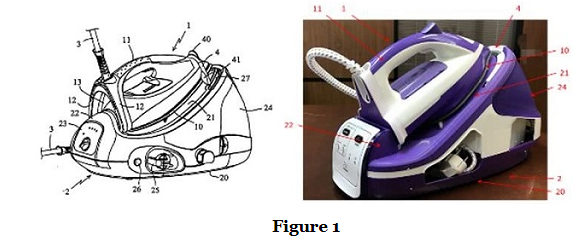Article 4 of the 2009 Interpretation of the Supreme People's Court on Several Issues Concerning the Application of Law in the Trial of Cases Involving Patent Infringement Disputes defines the functional technical features of claims and interpretation rules thereof. In accordance with this, it is possible to narrowly construe a feature to the specific embodiment and its equivalent embodiment by arguing that a claimed feature is a functional one. In judicial practice, the accused infringer usually adopts this strategy in its non-infringement defence to narrowly construe the scope of patent protection in order to obtain a favourable position in the infringement comparison.
The 2016 Interpretation (II) of the Supreme People's Court on Several Issues Concerning the Application of Law in the Trial of Cases Involving Patent Infringement Disputes elaborates on the parameters within which a technical feature may be deemed as functional, but also makes an exception where a technical feature being defined by functional expression will not be found functional, provided that "a specific embodiment for achieving the above functions or effects can be directly and specifically determined by those ordinary in the art only by reading the claims". However, it remains controversial in the patent community as to whether there are other exceptions in this regard.
In a patent civil litigation concerning an ironing appliance owned by SEB, the main issue of the dispute was whether the securing means feature of SEB's patent ZL200580005815.8 was functional.
Claim 1 of SEB's patent description reads:
an ironing appliance comprising an iron (1) and a portable base (2) incorporating a receptacle for producing pressurised steam, the portable base having a rest surface (21) for receiving the iron (1), the iron having a soleplate (10) surmounted by a body incorporating a handle (11), characterised in that, the portable base (2) is provided with securing means for holding the iron (1) stationary on said rest surface (21), said means for holding the iron (1) stationary bearing against the body of the iron (1) upstream and downstream from the handle (11) so that the entire ironing appliance can be carried by the handle (11) of the iron, said securing means include at least one movable securing element (4) that can take up a folded down position in which the iron (1) can be extracted from its base (2) and a position for holding the iron (1) stationary in which the securing element (4) comes into the vicinity of the body of the iron (1), and the securing element (4) is an arcuate element movable in rotation, said arcuate element (4) is movable between an unlocked position in which the arcuate element (4) is disposed substantially in the same plane as the rest surface (21) of the iron (1) and a locked position in which said arcuate (4) is disposed on the top front portion of the iron (1). (Emphasis added.) (Figure 1.)
On 24 May 2017 SEB instituted a patent infringement suit before the Ningbo Intermediate Court against Ningbo Changli for manufacturing, selling and offering to sell infringing irons. In the court hearing, Changli made a non-infringement defence by arguing that the securing means feature of Claim 1 is recited by the effect of such means; thus, the feature is a functional technical feature in accordance with Article 8 of Interpretation II and should be narrowly construed with reference to the specific embodiment or its equivalent technical solutions.
SEB argued that Claim 1:
- does limit the securing means with its effect of enabling "the entire ironing appliance to be carried by the handle (11) of the iron"; and
- does not fall within the only exceptional circumstance as prescribed by Interpretation II.
However, the feature of the securing means of Claim 1 should not be considered as a functional technical feature based on the following reasons:
- The provision "expressed by functional expression" of the judicial interpretation should be interpreted as "expressed only by functional expression". In addition to limiting securing means by functional expression, Claim 1 also structurally limits the securing means by including relations, specific shape and position relations.
- The patent regime is based on the mechanism of "giving a granted legal monopoly in exchange for public disclosure". The patent description of this case discloses various embodiments, and the structural limitation of securing means of Claim 1 is a reasonable generalisation of the multiple embodiments disclosed in the patent description, so the scope of protection thereof corresponds to the disclosure in this patent. Therefore, the reasonably generalised scope should not be narrowly construed due to the existence of functional expression.
The Court of Appeal of the Zhejiang High Court found SEB's arguments tenable based on the reasoning that although the securing means of Claim 1 is recited by functional expression, it also clearly defines the structures, so the securing means of Claim 1 is not a functional feature. Based on this finding, the final decision ascertained literal patent infringement, without narrowly construing the securing means to the specific embodiment or equivalent solution.
This case serves as a reference on how to determine the functional features in patent infringement disputes. For a technical feature in a claim that is not only defined by functional expression, but also defined by the structures, components, steps, conditions or the relations therebetween, if the latter definition is a reasonable generalisation of the disclosure of the patent description, such technical feature should not be deemed as a functional feature based on the functional expression, and should not be construed in an unreasonably narrow manner.
This article was first published by the International Law Office, a premium online legal update service for major companies and law firms worldwide.




